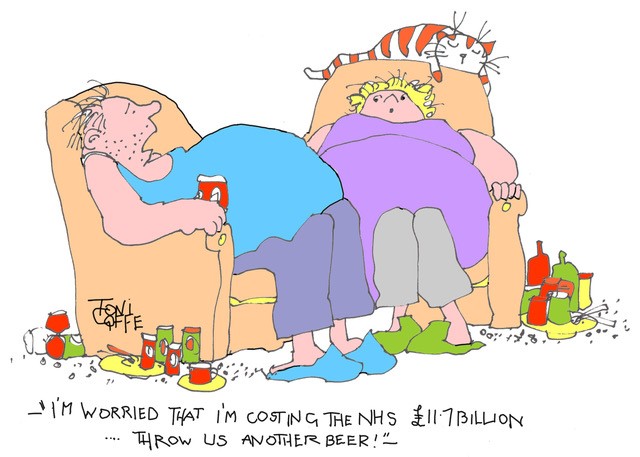DIABETES
Type 1 and Type 2 Diabetes
Type 2 diabetes mellitus (T2DM) is what I will be discussing. Type 1 DM is something else although it is also a risk factor for cardiovascular disease. T1DM is a condition whose onset is usually in young people whose pancreas fairly suddenly packs in and stops producing insulin.
Insulin is essential for the control of sugar in the blood, ushering the sugar into the cells to help fuel activity and ensuring that the blood level of glucose is kept within narrow limits. Type 1 diabetics can only survive by regularly injecting themselves with insulin for the rest of their days. Type 2 diabetics do produce insulin but in insufficient amounts to control their blood sugar.
The causes of T2DM
T2DM develops later in life and is largely a result of an unhealthy lifestyle. There is a genetic element – the tendency to develop T2DM is inherited but it rarely manifests in the absence of eating too much and/or exercising too little. The pancreas in normal people responds to the flood of glucose into the blood stream after each meal by increasing the output of insulin. The insulin helps the cells to absorb the glucose, keeping blood glucose level constant and fueling cellular activity. Exercise assists this process by enhancing absorption of glucose into muscle cells. People who carry too much weight, particularly those with central obesity, and take too little exercise develop a state called insulin resistance. In this condition insulin becomes less effective at keeping blood glucose levels normal and a greater production of insulin is needed to maintain normal blood levels. So the pancreas has to work ever harder to produce enough insulin for normal metabolism and eventually becomes unable to satisfy the body’s ability to keep its sugar level within normal limits – blood sugar rises, known as “hyperglycaemia”, the hall mark of diabetes, in this case T2DM. The problem is aggravated by the laying down of fat in the liver, which increases liver insulin resistance, and excess fat in the pancreas, reducing its ability to produce insulin.
The growing problem of T2DM
Diabetes is a growing epidemic with progressive increases in rates of diagnosis as the population becomes older and fatter – and less active. In the mid-nineteen nineties about two to three percent of the UK population were known to be affected – the figure now is about 6% and growing. There are about four million diabetic patients in the UK, with more than 21,000 deaths per annum. In England and Wales about 7,000 subjects under the age of 25 are diabetic (Diabetes UK figures). The cost to the NHS of managing diabetes is a staggering £11.7 billion which is more than 12% of the total NHS budget!
The side effects of diabetes
The complications of diabetes are legion. It is a risk factor for atheroma (“hardening of the arteries”) of large vessels which leads to heart attacks and strokes – and may result in gangrene of the legs. Small blood vessels are also affected leading to impairment of sight and ultimately to blindness. Damage to nerves causes numbness and neuralgic pain. Other ill effects include kidney disease and susceptibility to infections. Since most type 2 diabetics are obese they are at increased risk for a number of different cancers but there is also a link between diabetes and cancer which is independent of their obesity. Untreated diabetes is also a risk factor for dementia, which develops more rapidly in diabetic sufferers.
T2DM is not a nice disease and in most cases it is preventable. Indeed too much food and too little exercise are such important causative factors that diabetes can be cured in a large proportion of sufferers simply by doing more and eating less! The fact that this is so seldom achieved is a tribute to the difficulty in getting inactive overweight individuals to change their ways. Part of the problem may lie in the fact that so many diabetics seem to be unaware that they have the cure of their disease in their own hands.
Next week I will discuss the ways of managing T2DM, including of course the use of exercise.
Subscribe to the blog
Categories
- Accelerometer
- Alzheimer's disease
- Blood pressure
- BMI
- Cancer
- Complications
- Coronary disease
- Cycling
- Dementia
- Diabetes
- Events
- Evidence
- Exercise promotion
- Frailty
- Healthspan
- Hearty News
- Hypertension
- Ill effects
- Infections
- Lifespan
- Lipids
- Lung disease
- Mental health
- Mental health
- Muscles
- Obesity
- Osteoporosis
- Oxygen uptake
- Parkinson's Disease
- Physical activity
- Physical fitness
- Pregnancy
- Running
- Sedentary behaviour
- Strength training
- Stroke
- Uncategorized
- Walking


